This weekend was supposed to be for a highly anticipated concert featuring Pure Prairie League, Poco, and Orleans. The excitement was building, but the COVID-19 pandemic put a stop to live music events, leaving question marks over the entire year of concerts, even as early May 2020 approached. During the weeks leading up to the would-be concert date, YouTube became a go-to for live music fixes, particularly Orleans’ rendition of the classic King Harvest song, “Dancing in the Moonlight.”
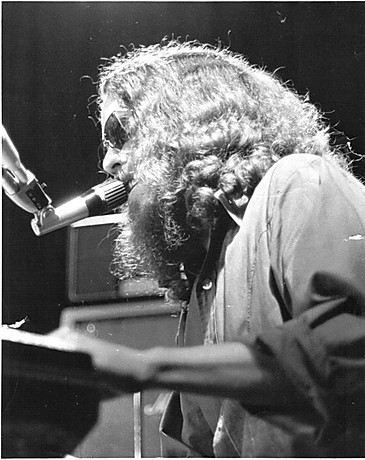
Sherman Kelly performing onstage in the 1970s, capturing the essence of the era’s music scene.
“Dancing in the Moonlight,” penned by Sherman Kelly, has resonated as a favorite 70s track for many. Initially released on July 9, 1972, by King Harvest, the song quickly climbed the charts, securing the 10th spot on the Cash Box Top 100, 13th on the Billboard Hot 100, and 22nd on the Billboard Easy Listening chart. Exploring YouTube comments is a common practice for fans, and on an Orleans video of “Dancing in the Moonlight,” a comment from Sherman Kelly himself, posted about five months prior, surfaced. This discovery sparked curiosity. Driven by a deep interest in the narratives behind iconic songs and albums – the very core of The Vinyl Dialogues series – the immediate thought was: Could Sherman Kelly be reached for an interview to uncover the story of “Dancing in the Moonlight”?
The answer was yes, and the story behind this beloved “Moonlight Dancing Song” is more incredible than one might imagine.
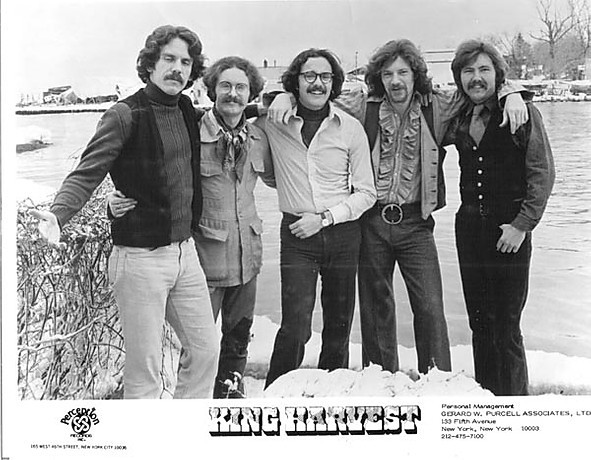
King Harvest in 1972, the band that brought “Dancing in the Moonlight” to mainstream success.
In 1969, Kelly and friends operated a nightclub in St. Thomas, Virgin Islands. A day trip to St. Croix was planned, chartering a 65-foot yacht. Unbeknownst to Kelly, seasickness was a significant issue for him, and both he and his girlfriend became severely ill during the voyage. Upon arrival in St. Croix, the group headed ashore for dinner via dinghy. However, Kelly and his girlfriend were too unwell to eat. The rest of the group got food and decided to return to the yacht for the night. Looking back at the harbor, the swaying mast of the boat was enough to deter Kelly and his girlfriend, leading them to decide to stay in town to avoid further seasickness.
A major oversight occurred: in his seasick disorientation, Kelly had left his wallet on the yacht, leaving him without funds for a hotel. They approached a small inn, explaining their predicament and promising payment in the morning when Kelly could retrieve his wallet from the boat. “And he said, ‘Sure, you can stay here if your girlfriend will sleep with me,'” Kelly recounted in a phone interview from his home in New York’s Finger Lakes region.
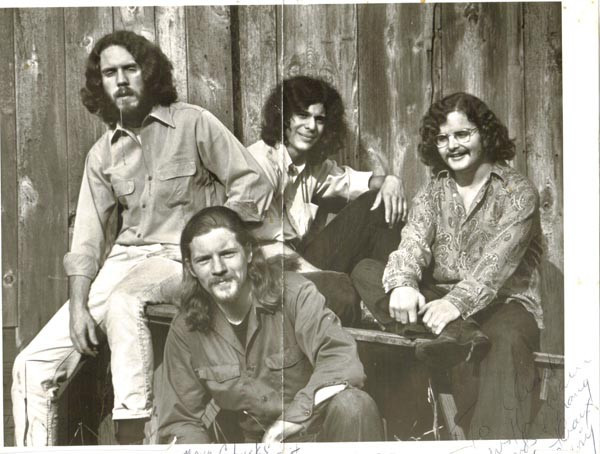
Boffalongo, around 1970, Sherman Kelly’s band before King Harvest, who first recorded “Dancing in the Moonlight.”
After being turned away at a second inn with a similar proposition, Kelly’s girlfriend suggested, “It’s a beautiful night. Why don’t we just stretch out on the beach?” “So we did,” Kelly said, “And that’s all I remember very clearly.” The events that followed were reconstructed from fragments of Kelly’s memory and accounts from others. While sleeping on the beach, Kelly and his girlfriend were brutally attacked by a local St. Croix street gang. Five gang members, wielding baseball bats, severely beat Kelly. His girlfriend was raped by the gang leader, with the others waiting their turn. However, she later reported that Kelly regained consciousness during the assault and fought back, creating enough disturbance to frighten the attackers away.
Drifting in and out of consciousness, they managed to follow lights along the shore, eventually reaching the only hospital in St. Croix. Kelly and his girlfriend were believed to be among the early victims of the infamous Fountain Valley Gang, who later, in 1972, murdered eight tourists and wounded eight more, devastating St. Croix’s tourism industry for years. “I woke up to the sound of my hospital roommate screaming in pain. Finally the screaming stopped, and I heard two doctors talking about him. ‘That’s it, he’s gone,’ one doctor said about the other patient. ‘What about him, you think he’s gonna make it?’ And the other doctor said, ‘No, I doubt it.’ I realized they were talking about me,” Kelly recalled.
Miraculously, Kelly survived. He spent several days in the St. Croix hospital before returning to St. Thomas, where he recuperated at a friend’s home. Eventually, he was well enough to return to New York, where doctors at New York Hospital re-fractured and reset the bones in his face and treated his other injuries. Back home in Ithaca, New York, still in pain and plagued by constant headaches, Kelly was in no condition to perform. However, his songwriting remained unaffected. It was during this period of recovery that the initial verses for what would become “Dancing in the Moonlight” began to take shape.
“I envisioned an alternate reality, the dream of a peaceful and joyous celebration of life. It was simply me imagining a better world than the one I had just experienced in St. Croix,” Kelly explained. An unspeakably traumatic experience that nearly cost him his life became the catalyst for a song of beauty and escapism. “It was amazing. People liked the song right from the start. I liked it, but I wouldn’t have predicted that it would become a big hit,” Kelly admitted. This “moonlight dancing song” was born from darkness, yet radiates light.
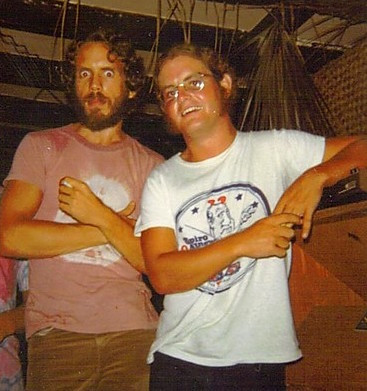
Sherman Kelly, pictured left, alongside Larry Hoppen, who later co-founded Orleans, further connecting to the “Dancing in the Moonlight” legacy.
King Harvest wasn’t the first to record this now-iconic track. In 1970, Kelly joined Boffalongo with his brother, Wells Kelly, guitarist Larry Hoppen, bassist and keyboardist Dave “Doc” Robinson, and Peter Giansante. “Dancing in the Moonlight” appeared on Boffalongo’s 1970 album, “Beyond Your Head,” featuring Sherman Kelly on lead vocals, Wells Kelly on drums, and Larry Hoppen on lead guitar. Kelly candidly describes his vocal performance on this version as “horrible.” “The first time I was in a recording studio for that version, we had these producers who thought it was a good idea to give me cocaine. That was probably the worst idea,” Kelly revealed. “I found myself in the vocal booth, with many distractions. And the producers would give me more cocaine to keep me doing takes until my voice was distorted and weird.”
Despite Kelly’s self-critique, Boffalongo’s rendition gained regional popularity. Another group, High Broom, also recorded “Dancing in the Moonlight” in 1970, releasing it on Island Records, but it didn’t chart. When Boffalongo disbanded, Wells Kelly joined King Harvest, a French-American group then based in Paris, fronted by Doc Robinson, also formerly of Boffalongo. Wells Kelly introduced “Dancing in the Moonlight” to King Harvest. The King Harvest version of “Dancing in the Moonlight” featured Robinson on lead vocals. It was released as a single, backed with “Lady Come Home” as the B-side. Once the song became a hit, King Harvest invited Sherman Kelly to tour with them in the summer of 1972. During live performances, Robinson sang lead vocals, and Sherman Kelly provided harmonies for his “moonlight dancing song.” “Doc had a pretty good voice, better than mine,” Kelly acknowledged. “I remember one critic said about me, ‘As a singer, Sherman Kelly is not too bad of a songwriter.’ That was amusing, and true.”
However, the touring life with King Harvest wasn’t for Kelly. His tenure lasted only one tour. “Imagine yourself in your twenties, having written a hit song, experiencing chart success, and traveling around. It was fun for a while,” he reflected. “But life on the road is ridiculous. I didn’t really care for it after a while.” Wells Kelly eventually left King Harvest and reunited with John Hall. Wells Kelly, Hall, and Harvey Brooks had previously been in a band called Thunderfrog in the late 1960s. Together with Larry Hoppen from Boffalongo, Wells Kelly and Hall formed Orleans, who also recorded their version of “Dancing in the Moonlight.” The current lineup of Orleans, which still includes Hall and Larry Hoppen’s brothers, Lance and Lane Hoppen, continues to feature “Dancing in the Moonlight” in their setlist. Larry Hoppen passed away in 2012, but his musical legacy, intertwined with this iconic “moonlight dancing song,” lives on.
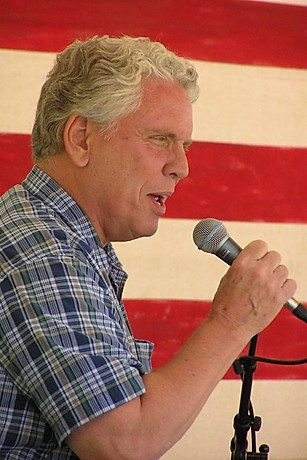
Sherman Kelly today, reflecting on his musical journey and the enduring legacy of “Dancing in the Moonlight.”
Sherman Kelly’s background extends beyond music. He graduated from Cornell University in 1967 with degrees in psychology and English. He furthered his studies at Alliance Francaise in Paris, the University of Lausanne in Switzerland, and the New School for Social Research in New York City, all before writing “Dancing in the Moonlight.” Following the tragic death of his brother Wells Kelly in 1984, Sherman Kelly found the music industry too painful and pursued other paths, earning a master’s degree in social work and psychotherapy from Syracuse University in New York. He worked as a psychotherapist for many years until his retirement. In 2008, he released an album titled “Burnin’ the Candle,” which included unfinished songs he and Wells Kelly had co-written. In 2000, Toploader’s cover of “Dancing in the Moonlight” became another hit for the band, further cementing the song’s timeless appeal. “Dancing in the Moonlight” has also been featured in numerous films and television shows. In 2017, it appeared in the video game “Guardians of the Galaxy: The Telltale Signs” and serves as the opening theme for the second episode, demonstrating the song’s continued relevance and popularity across generations and media. The journey of “Dancing in the Moonlight,” from a dark experience to a song celebrated worldwide, is a testament to the power of music and resilience.


